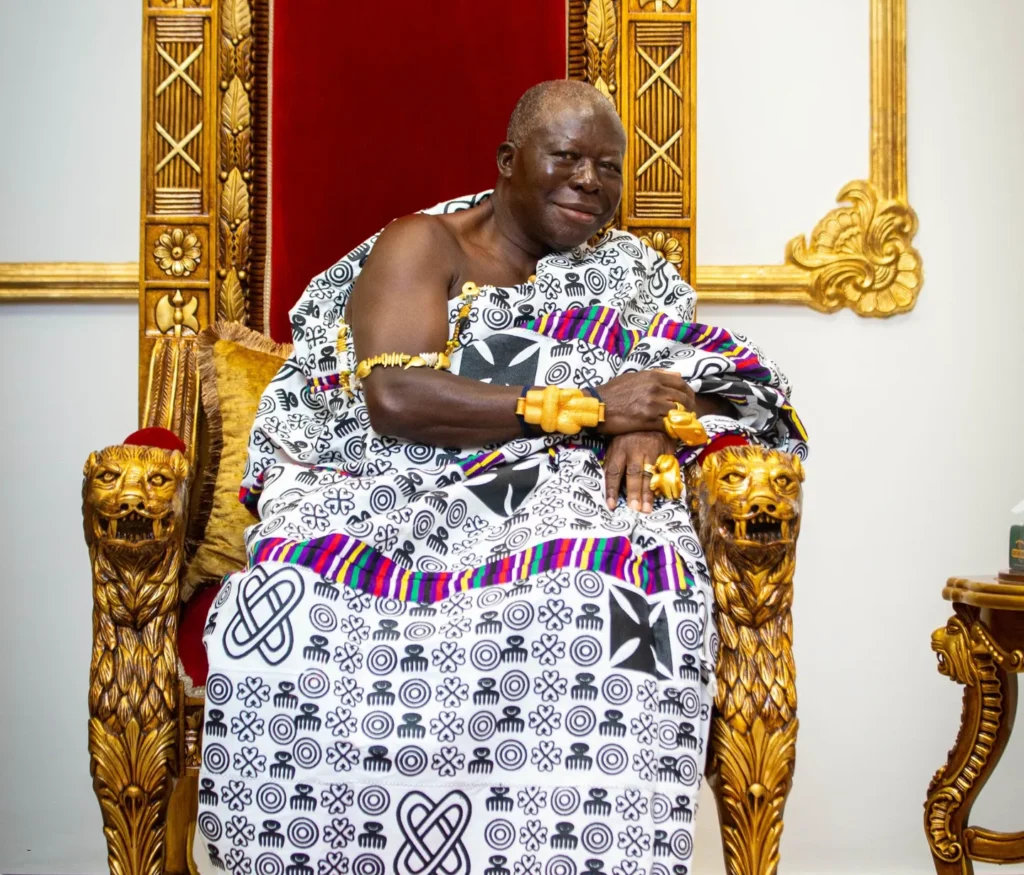Asantehene Otumfuo Osei Tutu II has received 130 gold and bronze artworks at the Manhyia Palace in Kumasi. The event marks a major restitution from South Africa and the United Kingdom, returning cultural treasures created in the Asante Kingdom between the 1870s and early 20th century.

The artifacts, aged between 45 and 160 years, represent Asante governance, spiritual life, and the high value of gold in Asante culture. They include royal regalia, ceremonial drums, and gold weights that illustrate leadership systems and social traditions.
A team from AngloGold Ashanti, led by Stuart Bailey, Chief Corporate Affairs and Sustainability Officer, presented 110 pieces to the Asantehene. He was joined by Samuel Boakye Pobee, Managing Director of the Obuasi Mine, and Edward Ennin, a former Member of Parliament.
The Asantehene thanked the company for its decision to return the objects. He noted that although AngloGold Ashanti had bought the items through open markets, it chose to return them to their rightful owners. These 110 artifacts increase the total number of restituted pieces in Kumasi to 140. They were originally part of the Barbier Muller Museum collection in Geneva, first assembled by Josef Muller in 1904.

Another 25 artifacts came from Hermione Waterfield, an 86-year-old British art historian and curator. Waterfield joined Christie’s in 1961 and founded its Tribal Art Department in 1971. Her donation reflects a lifelong engagement with African art and a strong commitment to restitution.
According to Ivor Agyeman-Duah, historian and director of the Manhyia Palace Museum, Waterfield’s gift includes a 46-inch wooden fontomfrom drum. British officer Sir Cecil Hamilton Armitage looted the drum from the Palace in 1900 during the Yaa Asantewaa War. Armitage later became Governor of The Gambia. Waterfield inherited the drum and owned 14 gold weights purchased between 1967 and 1973, including pieces from Christie’s auctions.
Agyeman-Duah mentioned that the late Timothy Garrard, a British historian and archaeologist, was one of the foremost experts on West African goldsmithing. Garrard spent many years in Kumasi, Accra, and Bouaké in Côte d’Ivoire. Among Waterfield’s notable donations is a brass self-portrait of Garrard on his motorbike, created by Yaw Amankwa in 1980.

Agyeman-Duah, who signed the transfer papers with Waterfield in London last October, added that other masterpieces will soon be displayed at the Palace Museum. These include works by Ablade Glover, El Anatsui, Ato Delaquis, Nee Owoo, Anthony Kwame Akoto, Vincent Koffi, and Edwin Kwasi Bodjawah.
The restitution marks another milestone in the Palace Museum’s growing reputation as a center for African cultural heritage recovery. A major expansion of the museum will open in early 2025, featuring the returned artifacts and rotating exhibitions that celebrate Asante history and creativity.
AngloGold Ashanti originally purchased 350 Asante objects from the Barbier Muller Museum in 2000. The pieces were displayed in Cape Town and Pretoria before their return to Kumasi. Agyeman-Duah stated that the museum aims to recover as many looted Asante treasures as possible through partnerships with global institutions.
The Asante Kingdom, which flourished from the 17th century, faced several British invasions in the 19th century. These conflicts—especially the 1874 expedition and the Yaa Asantewaa War of 1900—led to the looting of royal treasures. More than a century later, many of those artifacts are finally coming home.


